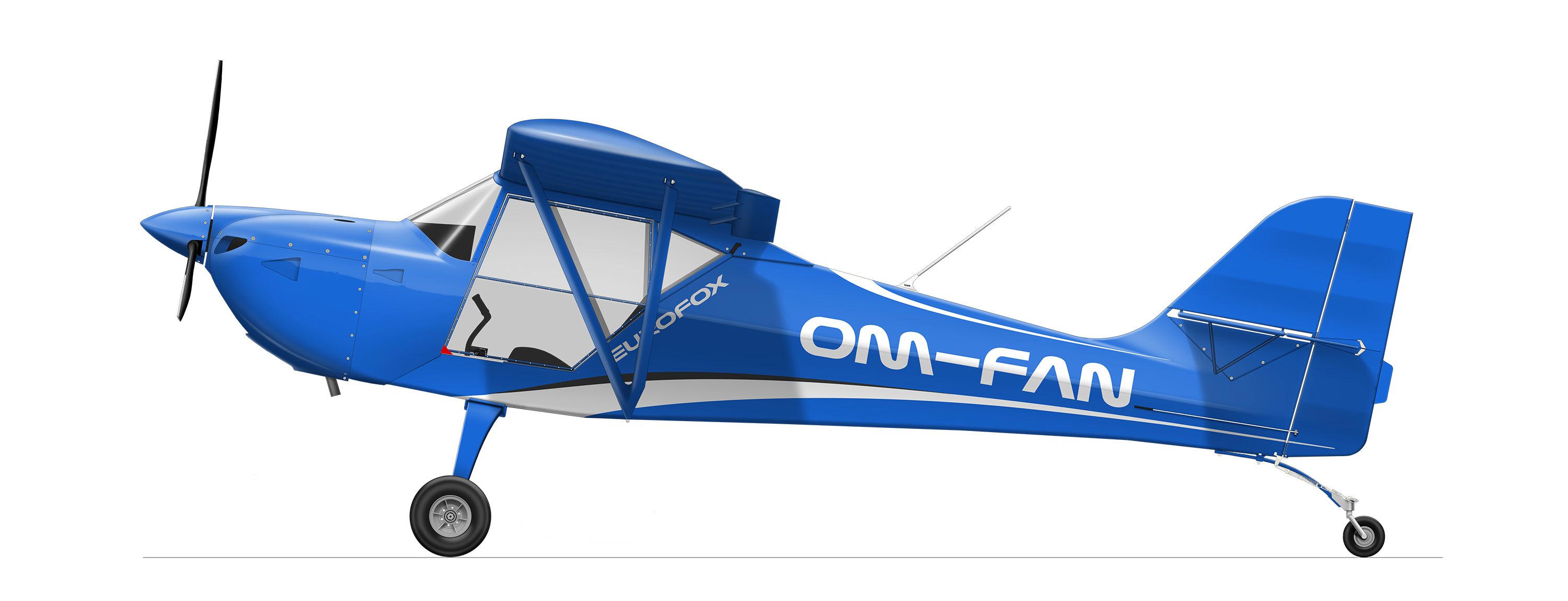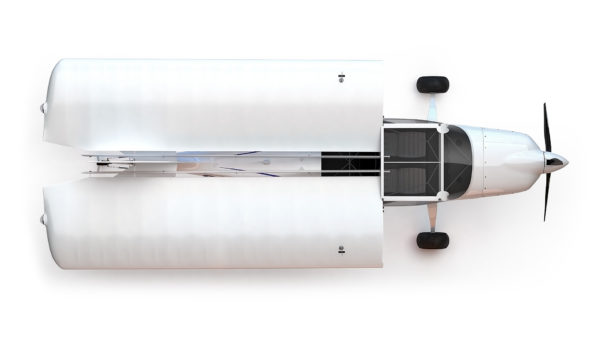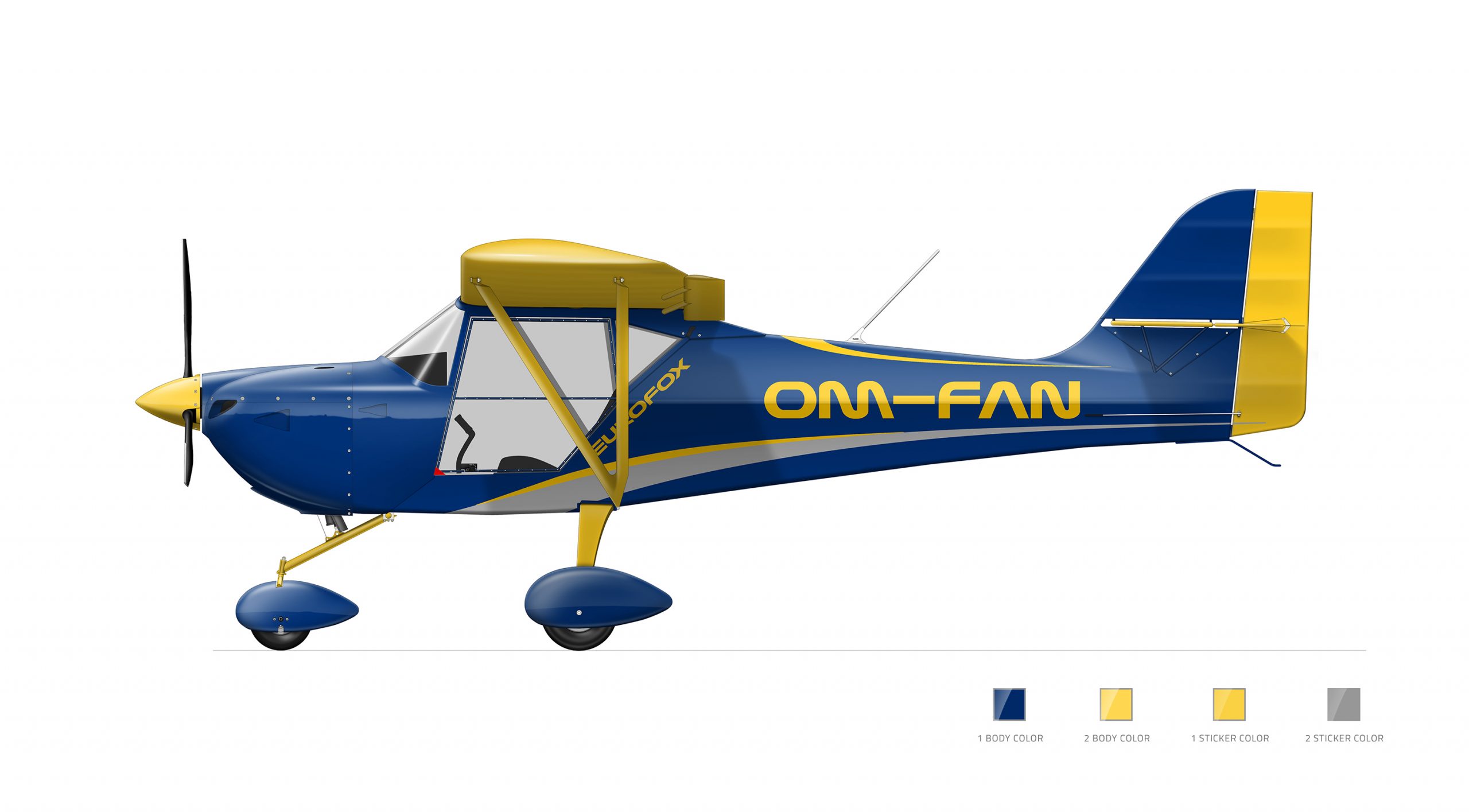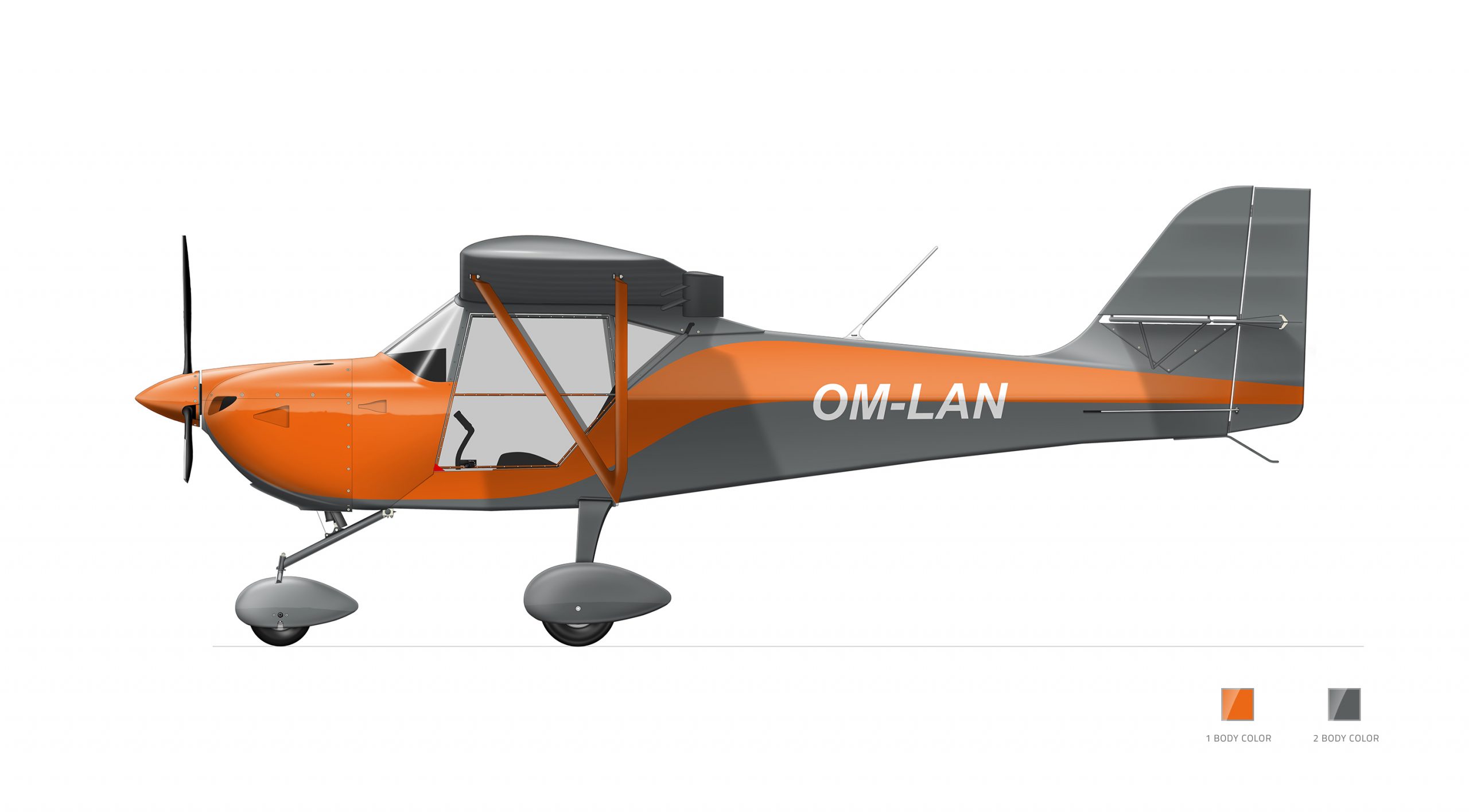
Eurofox
Tradition since 1990Overview
The Eurofox are factory-built two-seat aircraft manufactured by Aeropro in Slovakia. Aeropro has been producing aircraft since 1990 with now over 600 aircraft now flying around the world. The Eurofox has modern designs with excellent performance and features — built with the finest workmanship and materials resulting in a completed aircraft of the highest quality. The EuroFOX is a real aircraft in every respect. It is joy to fly and own, extremely comfortable with responsive, coordinated controls which immerse the pilot in the pleasure of flight. With class leading visibility, the EuroFOX provides true agility and tremendous satisfaction for the pilot and passenger.
Available with the world’s leading aero engine for all LSA aircraft, the Rotax 912 series. The aircraft is a high wing STOL aircraft with class leading handling, specification, payload and performance that cannot be matched by its direct competitors. Having the widest undercarriage in class, constructed in robust GRP, the aircraft is proven over decades with almost half a million landings. The EuroFOX is a real fun and engaging aircraft capable of operating from the shortest and roughest strips, whilst efficiently cruising at 100 knots.
Fuel capacity (L)
Economical speed Vek (km/h)
Min. speed (km/h)
Max. Speed (km/h)


Fuselage
The fuselage is designed to provide maximum strength, pilot and passenger comfort, and ease of construction. The canopy frame, engine attach points is enveloped in a high-strength, 4130 Chromoly cage — the same steel used to manufacture rifle barrels — providing an additional layer of security and safety.

Powerplant
The EuroFOX is a traditional aircraft and our philosophy on engine choices is quite simple – stick with proven tried and tested engines, with known performance, reliability and service history. Therefore, the EuroFOX has dedicated its engine choices to the market leading 4 stroke “Rotax” range of aircraft engines, all with simple maintenance schedules. Rotax engines have a 2000 hour TBO, with the ability to “run on condition” thereafter, with many examples lasting over 4000 hours.
Rotax 912 UL (80 HP)
The lightest and most fuel efficient of the range. Most popular in the EuroFOX microlight versions, this low compression engine is extremely robust, reliable and easy to maintain and is well suited to the 450 kg microlight EuroFOX.
Rotax 912 ULS (100HP)
A carburetted 100 HP engine higher compression engine with reliability and power to weight at its core. Specified in almost 90% of all worldwide light sport “group A” aircraft and a popular choice with EuroFOX 560 kg LAA aircraft. The 912ULS is also the engine of choice for many glider towing EuroFOX tugs.
Rotax 912iS Sport (100 HP)
All latest technology from Rotax, this fuel injected, ECU controlled engine is the most advanced and developed in the Rotax range. Based on the proven 912 engine but having many new features and multiple redundancy on all systems. This newest of the Rotax engine range offers a HP increase of around 10% at max continuous rpm over the 912ULS, but has the fuel economy similar to the 80 HP 912 UL. This engine is proving popular with LSA EuroFOX pilots, but also for increased power delivery performance in the EuroFOX glider towing environment.
Rotax 914 UL (115 HP)
The 914 UL has been around for over decade and is offered specifically for use in the EuroFOX within the glider towing environment. Could be of interest for those clubs with the most difficult of airfield sites or those with the highest wing loading or heaviest gliders.
Rotax 915iS (141 HP)
This is the largest HP engine in the Rotax range. Could be of interest for those clubs with the most difficult of airfield sites or those with the highest wing loading or heaviest gliders.
Wing
Wing of rectangular platform with its own aerofoil section is of frame structure with two spar tubes and the system of diagonal struts and system of ribs. Al-alloy tubes of 63 mm diemater are reinforced in the hinges regions by tubes of corresponding diameter. A system of ribs consists of 14 ribs and of 13 aux. ribs supporting the fabric skin in the front wing area. In the horizontal plane the wing is braced by a system of diagonal steel spar tube.
The 2×25,5 l fuel tanks are housed in the wing root part. Tanks are welded from Al-alloy sheet. The leading edge shape is guaranteed by a fiberglass part bonded in front of the spar tube. The trailing edge is fitted with an Al-alloy shaped batten.
The wing is covered by synthetic fabric POLY FIBER, with applied stretching lacquer and sprayed by a first-rate exterior enamel. flaperons (Junkers flap) are attached through five hinges to the ribs under the wing trailing edge. The flapperon structure consists of Al-alloy tube and laminate sandwich (foam, epoxy resin, glass) formed in a negative mould. Both wings are attached to the fuselage in the upper part through the main tube hinges and in the bottoom part by the hinges of the “V” ‑shaped wing struts. The system of common rear wing hinge and tilt truss axes allows the wing to tilt along the fuselage rear part. This saves a lot of storage place and allows the road transport.
Electric system
Electric system is formed single-wire system of cabling with ground connection negative pole. Network supplies alternator with rectifier with 250W power and accumulator 12V / 16Ah. Board network is switched by a switch key of switch box. Individual circuits of appliances are switched by separate switches and protected by a safety limit switch.
Cockpit
Eurofox has roomy cockpit 112cm — wider than a Cessna 172! Our instrument panel is special in that it allows the use of almost any large-screen GPS (including the iPad or iPad mini!), while most (virtually all) other S‑LSA planes have instrument panels that have sort of boxed themselves in and don’t have room (at least not in the best spot) for a large-screen GPS and panel has a large map pocket. You can access to the luggage area while flying (many planes have luggage compartments that cannot be accessed while inflight).
The aircraft has two upholstered side-by-side. Each is equipped with four-point seatbelt. Luggage compartment with dimension 500 x 300 x 400 mm is situated behind the seats. Is designed for maximum 10 kg. Eurofox has clear polycarbonate gull-wing doors equipped with gas-lift struts and with doors quick-removable (for flying without doors!)

Fuel system
Fuel system has a total capacity of 86 l. It consists of two wing tanks (40 l each) and of an 5 l equalizing tank in the fuselage, connected through the pipes with the fuel cock and filter. Fuel level indicators are part of each tank, the minimim fuel warning light is mounted as standard.


Control of the aeroplane
The aeroplane is equipped by dual stick control. Elevator and ailerons are controlled by a system of rods whereas the rudder is cable controlled. The wing flaps are controlled by the lever and rod and through the countershaft is threaded into aileron-flapperon circuit. Trim control is mounted as a standard. All engine controls are placed on the instrument board. Rudder control – pedals of foot control are situated on the floor in front part of cockpit. Moving of pedals is transmitted on the rudder through steel cable. Wing flaps – handle of wing flaps is situated in middle part of cockpit.
Specifications
Technical data
| Wingspan | 9,125 m |
| Length | 5,605 m |
| Height | 2,25 m |
| Cockpit Width | 1,12 m |
| Wing area with flap | 39,47 kgm‑2 |
| Chord length without flap | 1,12 m |
| Chord length with flap | 1,3 m |
| Wingloading | 39,47 kgm‑2 |
| Aspect ratio | 7.3 |
| Min. speed | 65 km/h |
| Operating speed | 110–160 km/h |
| Optimal speed Vopt | 140 km/h |
| Economical speed Vek | 160 km/h |
| Max. Flap Extension Speed | 150 km/h |
| Max.speed | 208 km/h |
Operating Weights and Loading
| All up Empty Weight (Average A/C) | 289 kg |
| Max. Take-off Weight-LSA category | 560 kg |
| Baggage hold | 20kgs as standard |
| Cross wind limit | 27.8 km/h |
| Glide Ratio | 9:1 |
| Range | 997 km (6Hrs) |
| Take-off Ground Roll at MAUW | 139 m |
| Landing Ground Roll at MAUW | 130 m |
Dimensions with Wings Folded
| Max Width | 2,4 m |
| Max Height | 1,77 m |
| Length | 6,4 m |
| Main Gear Width | 2,3 m |

Types of undercarriage
Eurofox 2K Version
Eurofox 2K taildragger features a composite main landing gear and has wide-spaced main wheels to aid with cross-wind landings and takeoffs, as well as resulting in superior ground handling. As taildraggers go, the forward visibility is very good and with the Eurofox 2K having clear polycarbonate doors the visibility out the side of the aircraft is exceptional.
EuroFOX 2K is a taildragger type with controlled tail wheel and are equipped by the premium Beringer dual toe brake system operated from the left and right seat and is available with several tire options.
standard-size rib tires (15x6x6) with wheel pants
Carlisle tundra tires (18x8x6)
Aero Classic tundra tires (21×8.00×6)
Airstreak 26″ tundra tires (26x12x6)


EuroFOX 3K Version
EuroFOX 3K a fixed tricycle undercarriage with a controllable nose wheel.This wheel is equipped by the tire with dimension 4.00–4 with tube. Main undercarriage carry low-presure tires with the dimensions 15×6.00–6 with tube (or 14×4 /4.00–6/) and are equipped by the hydraulic disk brakes operated from the left and right seat. A parking brake is optional.



TOW version
The EuroFOX is a non EASA “annex II” permit “group A” aircraft cleared to aerotow gliders up to 800 kgs. The aircraft is very economical to own and run, with proven capability and reliability, frugal annual maintenance costs with excellent tug performance. EuroFOX is a strong performer, able to tow gliders up to 800 kgs and also performance gliders with a wing loading over 50 kg/m2. From a Nimbus 3DT to a JS1, all club two seaters and vintage in between…..
The EuroFOX has been aerotowing in world for a decade, most sites being difficult grass airstrips. The EuroFOX can be specified as a tail dragger or nose wheel, and with the majority of EU gliding sites being unpaven grass strips, often boggy, sometimes short in length, only the EuroFOX tail dragger with tundra tyres will do.
In the last 2 years G‑MOYR has flown 830 hours to date, done 4200 aerotows, and 4300 landings. The aircraft is in remarkably good order, flies superbly, and the retract winch has performed faultlessly.
It is a fact of life that others will try to follow a successful, innovative and market leading product. However, gliding clubs choose future tugs based on performance, suitability, value, usability, durability and pilot safety: in all these aspects and more, the EuroFOX is unrivalled as a dedicated liquid cooled Rotax 912 or 915 tug.
Folding wings
The EuroFOX “wingfold” is just that, wing fold…… one person can open or fold the wings, single handedly in less than 10 minutes, no tricks, no heavy lifting or any extra hands needed. The EuroFOX wingfold was designed from the outset and an integral part of the aircraft, not an afterthought as so many other “wingfold” claims are.
The EuroFOX wingfold is a standard and central feature of the aircraft, there is no wear and tear, it is designed to have the wings folded on a daily basis if that is required. All the EuroFOX aviation aircraft are always kept with wings folded, and they have been so for many years, no problems at all after many hundreds of daily “fold and unfolds”.


only one person, only 10 minutes, to fold our wings!
our planes are easily trailerable or can be stored in relatively small spaces
our planes will fit into an enclosed trailer (while some planes with folding wings are too wide to fit into an enclosed trailer)
our planes give the option of using an enclosed trailer as portable hangar
with hangar space being unavailable or ridiculously expensive in many parts of the world, our truly transportable aircraft has a great advantage over almost all other planes
Paint Schemes
Classic paint schemes
note : Classic paint schemes includes one sprayed body color and two colors for stickers. Body and stickers color are optional.
Special paint schemes
note : special paint schemes includes two or more sprayed body colors. Body colors are optional.
Samplers
We are using Imron Fleet Line for body color. Imron Fleet Line is advanced product system for commercial vehicles, trucks, buses and trailers. It consists of a wide range of products, from undercoats to topcoats.
Imron Fleet Line systems provide a full colour offering including RAL and corporate shades. A comprehensive undercoat package enables you to apply Imron Fleet Line to a variety of substrates. A choice of thinners and activators allows you to tailor the performance of Imron Fleet Line to your specific needs.


We are using high performance ImagePerfect™ 5700 foils for stickers. ImagePerfect™ films in the 5700 Premium range are suitable for indoor and outdoor applications. The vinyls are specially-formulated, flexible, calendered PVC to enable them to cut better and weed easier and faster. These films are coated with a pressure-sensitive, acrylic adhesive suitable for use on a wide variety of clean, dry surfaces. The exclusive liner is a sealed, kraft paper which gives constant layflat and trouble-free conversion on all cad/cam equipment from the fastest drum and flatbed plotters to screen presses.














